 Star Wars: The Old Republic
Star Wars: The Old Republic
Release Date: December 20, 2011
Custom Features: Story-driven System, Space Combat, Companion & Crafting System, Item Growth through Mods, Alignment, Seamless Quest / Instance Control
Strengths: Fun & Smooth Gameplay, Storyline & Cutscenes, Huge World, Massive amount of Content, Nice graphics, Companion and Crafting System
Weaknesses: Bugs, Undefined Alternate Advancement System, Weak Guild and Community Interaction Systems
Notes: One of the best MMOGs released, Excellent potential for growth
Billing Style: Purchase + Monthly Subscription
Star Wars: The Old Republic (“SWTOR”) launched on December 20, 2011 as one of the most anticipated online games ever released. With more than 100 servers in North America alone, Bioware’s first online game has a lot to live up to, and it certainly delivers.
SWTOR is a mixture of innovation and refinement of standard MMOG play methods. It is, without a doubt, the most story-driven MMOG ever made, focusing on making the player and their core class the center of the universe; and they pull this off brilliantly. The game phases the player into the different play-styles and gradually introduces the core features such as space combat and crafting. And to make things even better, the storyline is different for each class, so if you play through to Level 50 with one class, creating another character of a different class will create a completely different experience from a storyline perspective; and the story voice acting and cutscenes are top notch.
One thing is certain. You are in the Star Wars universe now. Everything looks, feels, and sounds like the Star Wars World, so fans will be thrilled. While I don’t consider myself a Star Wars “fan” (and my opinion is the series only consists of three movies – episodes 4-6) I do enjoy the familiar look and feel to things. What can I say? Killing sand people with a blaster, or fighting a Sith with a light saber is very enjoyable.
If one word could be used to describe SWTOR it’s BIG. Everywhere you go, the environment around you is immense and enveloping. From the city slums of Corusant to the open desert wastelands of Tatooine, your adventure takes you throughout the galaxy and through numerous different environments.
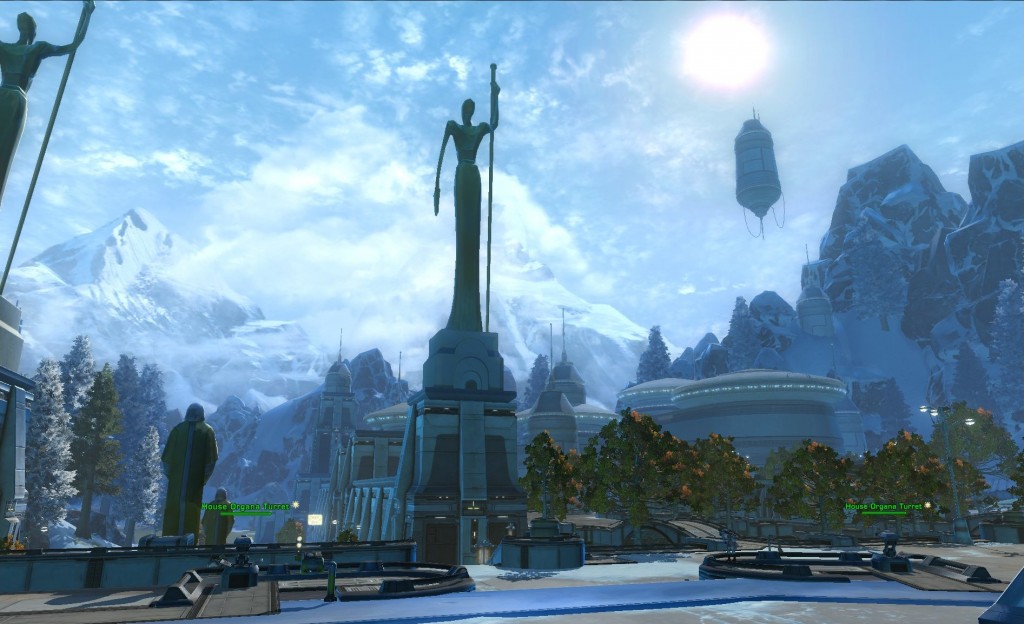
There are numerous systems that set SWTOR apart from other MMOGs. First is the story-driven system. Second is the companion system which guarantees you never have to explore the galaxy alone. Third is the crafting system, which is based on your companions and reverse engineering. Forth is the space combat system where you acquire your own ship and participate in action-packed laser-blasting missions. Fifth is the alignment system which moves either toward the light or dark side based on your actions. There is also a legacy system for all of your characters on a server, but features have not yet been implemented. They did enhance quests a bit with the “bonus” system where you can find yourself handling multiple phases of quests activated merely by interacting with an object or killing specific targets. All of this makes one thing certain: there’s always something to do. You can also augment your items with modifications, similar to enchantments and such in other games.
The game revolves around nine races and four core classes (with a focus on Melee, Ranged, Healer and Hybrid), and each class has two “advanced classes” you can specialize in. The max character level at launch is 50, and you get one skill point to spend per level after reaching level 10 in one of three trees; two trees are custom to your advanced class and one is shared between the “base” class.
The economy revolves around credits and tokens (from planets, space battles and pvp). You can expand your bag and vault space by purchasing extra slots with credits. That paired with item repair and the crafting/companion system creates a good money sink. The “mounts” are speeders, and all are currently land based; but there are easy to access transportation hubs everywhere which speed and fly you from location to location.
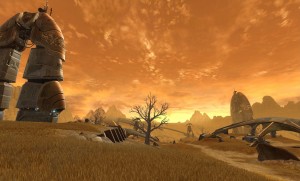
Each Planet has its own central location with trainers, vendors and such, and each side has a main “hub” (for the Republic it’s the Republic Fleet). The Planets are all unique and many have constant activities and combat taking place, which adds to the realism and environment. For example, Ballmora is under attack from space and the air, and everyone outside on Quesh is wearing face masks due to the toxic environment. Little things like this show the love and detail that went into creating this world.
There is PvP, either through choosing a PvP server, engaging in Warzones or fighting in the open PvP areas. You earn Valor by engaging in combat with other players and the PvP is “fun” even though you cannot currently choose what warzone you want to participate in (there are three).
Guilds are basic. No vaults or perks; only membership and ranks. There is also a basic Achievement system called the “Codex”. There are no factions.
The game does have a number of bugs, mainly revolving around video and “stuck” problems with the world; however a simple restart of the client and /stuck solves the issue. I did hear about people getting stuck on their ships, unable to disembark to planets, but I believe that was already fixed and I never experienced it.
I’m going to review the different systems of SWTOR and touch on every core feature the game has to offer. Feel free to comment and provide any additional feedback that you have regarding what you read here or experienced yourself. I hope this review provides helpful information for those who are interested in learning more about Star Wars: The Old Republic and what it has to offer.
Mechanics
Economy, Level, Stats, Abilities & Skills, Social & Valor, Legacy System, Travel, Companions, Crew Skills (Crafting & Reverse Engineering, Gathering & Missions), Regeneration & Consumables, Codex (Achievements), Pets, Death, Repair, and Ships.
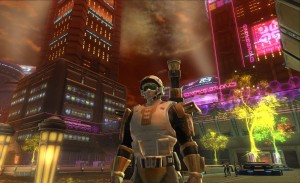
The Economy of SWTOR revolves around credit and Tokens (called Commendations in SWTOR). As with many MMOGs tokens are acquired by completing quests and are either planet, PvP, or space battle based. You can then use these tokens to buy specialized gear or outfit your ship. The balance of cost vs. spending seems to be pretty solid as one progresses through the game and there are plenty of places to put your money, such as companion missions, repairs, and “stims” which temporarily increase your skills, which do end up costing quite a bit for your first character. While I managed my money pretty well and engaged in some profiteering through the auction system, I never had too much money and was always striving to make more credits to support sending my companions on crafting missions. The PvP economy is a multi-tier system where you earn basic Warzone Tokens. You turn those tokens in a 3:1 ratio to obtain Mercenary tokens (or Commendations as they are called). When you obtain 200 of each, you buy a Champion Gear Bag, which has 3 Champion tokens and the possibility of an unassembled Champion item which can be turned in to get the full item; but if you don’t happen to get “lucky” you can buy the item later with the tokens you collect. Champion is the first tier, Centurion is the second and Battlemaster is the third. As far as I know, Centurion and Battlemaster Commendations can only be acquired through quests at this time. Flashpoints also drop tokens so a players can focus on specific rewards by running the same category of Flashpoint multiple times.
There are 50 character Levels in SWTOR. There are seven Stats: Strength, Presence, Aim, Cunning, Endurance, Willpower and Expertise. As with other MMOGs, the stats which you focus on are based on your class, but Presence is an important one as it affects your companion’s performance, and Expertise affects your character’s effectiveness in PvP. Each class has a number of Skills (such as special attacks, etc.) and Abilities (advanced-class specific skills, both passive and aggressive). Advanced class Abilities is where you spend your custom “per level” points, and Skills must be learned from trainers and come in multiple ranks; and as mentioned above, they can be expensive.
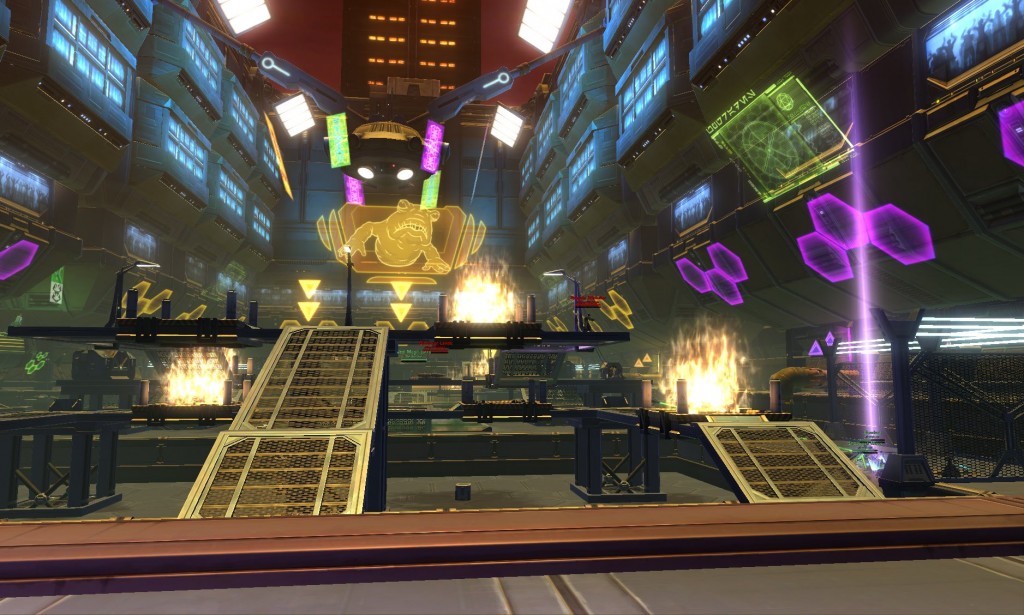
Your character also has a Social and Valor rank value. Social is tied to engaging in activities with other players (group missions, etc.) and Valor is your PvP rank. Both Social and Valor ranks can be requirements on items (you will find Social Items Vendors and PvP Vendors). I’m sure we’ll see future outfits of socialites which reflect their engaging nature.
SWTOR features a Legacy system when you complete Act 1 for the first time. This is a “last name” that you define which is then assigned to all of your characters on the server. While the actual features of this system are yet undefined, once you set your Legacy, all characters on the server put experience towards leveling it up. Warning to new players – at this time once you choose your Legacy name, it’s permanent, so make it count. Unfortunately the game doesn’t really inform you of this when the window pops up asking for you to define it.
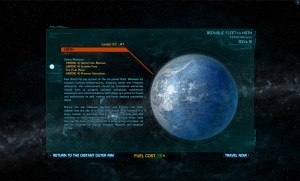
Travel takes place on two levels, planetary and galactic; both are easy and intuitive. The planets have shuttle transports spread throughout the regions (which you have to discovery and click on to activate) and once you get accustomed to using your ship to fly around the galaxy, you quickly learn how to get from one point to another. Most stations have a similiar layout as well, so when you go somewhere now, it’s not completely foreign. Planets also have quick travel points which are separate from transport points. These are points you can recall to which must also be individually discovered and clicked to access.
Companions are featured like no other MMOG I’ve seen as they are key to crafting, useful, fun, and the AI works well. While you don’t control what they train or put any points into them, each companion has strengths and weaknesses, and you can equip them with any items you like that fit their class; and it certainly makes a difference. This guarantees you never have to go anything alone as you can always have one of your multiple companions at your side fighting it out with you. Companions have an attribute called Affection which directly affects their actions. The higher the value, the better they do. This is what Companion Gifts are for; give them to your companions to increase their affection and get better results from their actions. You also gain (or occasionally lose, depending on your decision and the companion’s personality) affection through interacting with and completing quests. One companion may give you affection for saving a village while another may frown upon it. At the core of the Companion system is the Crew Skills feature. Instead of the traditional crafting approach most MMOGs take where you go to a workstation and build something, in SWTOR you assign tasks to your companions and can have multiple companions working at once. You can even queue companions to make a number of items, and if those items take hours to make, simply log off and come back later and they’ll be done.
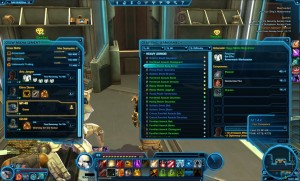
Companions can engage in three “skill” related acts: Crafting, Gathering & Missions. Crafting is fairly standard once assigned to a Companion; each item requires specific materials, and items can come out as different quality levels with the highest quality allowing for slotted modifications. But the really cool part is Reverse Engineering (“RE”), which allows you to disassemble any crafted item and learn the next tier (with multiple variations). So you can craft a green item, reverse engineer it to get the blue version with a focus on a stat. You can then reverse engineer the blue item to learn the purple; but it’s hit or miss. Sometimes you get it the first time around, sometimes it takes what seems forever. The crafting system is probably one of the most in-depth money sinks I’ve seen in a MMO as each item which is reverse engineered results in a compounded random feature, so one reversed blue item may procure a purple which has one stat while reverse engineering another blue may create yet another purple which has a different stat than the other purple you just discovered; yet the purples are based on the stat enhancement of the blue. This creates a compound crafting system which has so many permutations a player could spend a ton of time and money attempting to discover all of the reverse engineered options and never gain access to all of them. To explain more clearly, you can start with a Green Heavy Armor Chest piece that focuses on Aim and Endurance. You can then RE that piece to reveal a blue that adds Accuracy. But what if you wanted Critical Rating? So you RE again and finally get a blue with Critical. You then RE the blue and obtain a Purple… but it has a Shield value. That may be good for your Vanguard, but a Commando wants something different! So you RE more blues and hope you get one that provides the final attribute you were looking for. Needless to say, players who put the time, energy and effort into discovering the highly sought after items will certainly do very well in the game, especially since there’s an aspect of luck to obtaining exactly what you need.
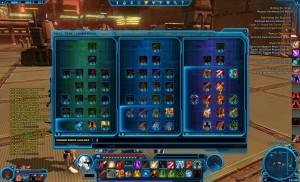
Gathering can either be done through exploring the world and extracting resources from world objects (such as debris, crystals, etc.) or by sending your companions on Missions, which are great because for a chunk of credits you can send your Companion off to hopefully return with a bunch of goodies, often including new schematics or purple items. There are also custom mission items you can find as well which offer new more bountiful mission rewards for your companions; and all of them cost money.
Note 1: I do think they will need to enhance the UI for crafting as there are so many variations a player can unlock it will become cumbersome with the current UI.
Note 2: There’s a problem with items that teach custom missions: they don’t tell you the name of the mission or if you already know it, so it’s difficult to determine if you should or should not buy a mission item from the auction house. Bioware should address this.
Consumables come in the flavor of Stims which enhance your stats for an hour, and medpacks which heal you. Regeneration is class-based and allows a character to quickly recharge/regenerate, ensuring little to no downtime.
The Codex is the game’s version of Achievements, but it’s only a collection of information. You do get new entries (and experience) when you discover new areas, obtain ranks, and engage in combat with new creatures.
You can purchase little Pets to follow you around, but they don’t provide any intrinsic value other than fun factor.
With the Death system, you can either respawn at the closest medbay or call a regeneration drone to resurrect you on the spot. If you call the drone, you are “invisible” to all mobs for a period of time which allows you to run to a safe location and heal up. However the more you die the longer it takes to call a drone (thus causing you to wait), and each time you die you take a repair hit to your items.
Items get worn through both death and combat; and not just for you, but your companion as well. You can Repair them at any vendor, and it can sometimes get costly. Keep an open eye for the glowing “helmet” above you or your companion’s picture to get warned about low durability. Yellow is the initial warning and red is the one you should address immediately.

Around level 15 you obtain your first Ship which you use to travel throughout the galaxy, can customize with upgrades, and engage in Space Combat (which is covered under Gameplay). The Ship is your primary hub of transport and acts as the basis of interaction with your companions and space missions. SWTOR really conveys a strong feeling of attachment to your ship as you essentially live on and operate from it (as do your companions). There are six ships available at launch, each specific to a character’s class.
Content
Races, Customization, Classes, Lore and Story, Quests, Mounts, World, Ambiance, NPCs & Enemies, Equipment and Inventory, Trading (Bank, Mail and Auction), and Tutorial.
SWTOR features nine playable Races: Chiss, Cyborg, Human, Miraluka, Mirialan, Rattataki, Sith, Twi’lek and Zabrak. Some races are empire-restricted (e.g. Sith can only be Imperial). The Customization isn’t very extensive; body, face, hair, tattoo, etc. type, hair and skin color. No race is any “better” than the other, and each race has a special attribute, but unrelated to performance (e.g. special dance, rally, etc).

There are Four core Classes for each side, with a total of Eight classes. For the Republic we have: Jedi Consular (Advanced: Sage and Shadow), Jedi Knight (Guardian and Sentinel), Smuggler (Gunslinger and Scoundrel), and Trooper (Commando and Vanguard). For the Imperial Empire we have: Bounty Hunter (Mercenary and Powertech), Imperial Agent (Operative and Sniper), Sith Inquisitor (Assassin and Sorcerer), and Sith Warrior (Marauder and Juggernaut). Once you hit level 10, the Skill Tree opens, and the two advanced classes have two of their own trees and share a common tree (e.g. a Commando and Vanguard share the Gunnery tree). Each core class has its own custom storyline, so a player could experience a total of eight completely different stories in building a character from level 1 to 50.
The Lore and Story of the game is all Star Wars. It is exceptionally well-done and you feel like you are a part of the Star Wars Universe.
Quests tie directly into the storyline and are done in the same interactive format as games like Mass Effect, and on top of that there is a bonus quest system where you can initiate a quest which has multiple stages. For example, you can kill a group of imperial soldiers and have a bonus quest you weren’t expecting pop up. Stage 1: kill more soldiers! Once complete, Stage 2 may ask you to blow up some generators, and before you know it, you’re on the fourth and final stage taking you to the imperial soldier boss and a nice reward. These quests are everywhere and a lot of fun to do. I’ve never run out of quests; as a matter of fact I’ve found myself leaving planets before the side quests are all done. The Class quests direct the main storyline, chapter and change of planet for your character. The quests are very easy to find through the world map and I personally haven’t encountered any quest bugs. While most quests are fairly standard: kill, find, rescue, destroy, etc. they are all fun and include a lot of interaction, cutscenes and dialogue. Quests also envelop player-specific areas/instances which blend nicely with the environment. For example, you can approach an enemy base entrance which has a green looking transparent field across it; this tells you it’s a player instance and specific for a quest/storyline mission. This helps to direct where to go and give you a heads up you’re entering a “quest area”. Red areas are off-limits and are either disabled until later (when certain criteria are met) or are for other classes. Quests also have multi-player social interactive aspects as well, designed so groups of people can engage in the dialogue together and obtain social points in the process.

Mounts come in the form of speeders with the first group being available at Level 25 with 90% speed increase. The next group is Level 40 with 100% speed increase, and the final group at Level 50 with 110% speed increase. The starter speeders are pretty goofy looking, but they’ve got entertainment value. As you raise in level and obtain the “beefier” speeders, the visuals are more impressive.
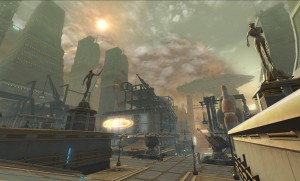
The Worlds of Star Wars include 17 planets available at launch with a few only accessible to only one of the two sides. Note these planets are shown based on the Republic side: Alderaan (28-32), Balmorra (32-36), Belsavis (41-44), Corellia (47-50), Coruscant (10-16), Dromund Kaas (Imperial), Hoth (37-41), Ilum (50-50), Korriban (Imperial), Hutta (Imperial), Nar Shadda (20-24), Ord Mantell (1-10), Quesh (36-37), Taris (16-20), Tatooine (24-28), Tython (1-10) and Voss (44-47). Each planet has a distinct look and feel to it (which is taken from the movies where applicable) including matching inhabitants, Ambiance and storyline. While the game doesn’t have day/night or changing weather cycles, you don’t really notice because the game keeps you moving from planet to planet enough to not get too worn out on the overall look and feel. As mentioned above, each side has a main “hub” with the Republic side being the Republic fleet. The game also has Flashpoints, which are instanced dungeons with heavy scripting and custom results based on the professions of the members and the decision made by the party as it relates to the light or dark side. There are 15 known instances available at launch and can be run at different difficulty levels.
If you’ve seen it in a Star Wars movie, it’s probably in the game. Aliens, Ships, Speeders, Buildings, Cultural Look & Feel, and all of this reflects in the inhabitants of the worlds and space stations. The NPCs (and Enemies) range in level and come in four flavors of difficulty: Normal, Hard, Elite, and Really Elite (group). The Sound FX when fighting them is great (the fun really begins when you start killing Sand People). Most enemies come in groups of three and work together when attacking you. The visuals are excellent, especially with light sabers and laser guns; just like the movies. It’s pretty easy to solo a single hard, but elites take a bit of planning and strength. However, if you get two or more on you and you’re not in a group, survival can be difficult.
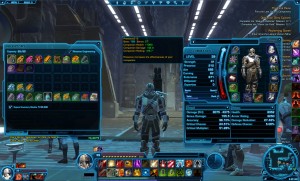
Equipment is focused on weapons, armor, generators, implants and such. There are seven tiers to equipment: Cheap (Grey), Standard (White), Premium (Green), Prototype (Blue), Artifact (Purple), Modifiable (Orange), and Legacy (not sure, haven’t seen one, but I would guess Gold). There are three types of Armor: Light, Medium and Heavy. There are numerous types of guns, melee weapons, and offhand devices. You can also obtain Relics which give stat bonuses and have “uses” and are based on your alignment and rank (e.g. Light rank 3). Bioware did a great job of defining the overall look and feel of your character based on the equipment you are using. As you raise in level, your character definitely looks meaner and more advanced, and throwing on that shiny new set of armor is very rewarding, not just from the stats, but in the way your character looks. One unique feature of SWTOR is the Modifiable item system where you can obtain slotted items and grow them with your character through custom modifiers. While you can craft custom blue and purple items that might have 1 mod slot, the Orange items have at least three, which allows you to really enhance them to your needs. If you like the visual appearance of an outfit you obtain early on, you can upgrade each of the components within the items as your character levels to keep the same look and feel but define the stats and strength of the items, resulting in a form of item growth based on upgrading your mods. This is a nice feature for those who want to focus on custom growth rather than item crafting which may result in blue or purple items that don’t quite meet the stat requirements of your class. Orange means more flexibility and focus while blue and purple means plug and play.
Inventory is a single bag with multiple slots. When you first start out, you have 20 slots. You can purchase an additional 20, then an additional 10, and so on and so forth, so you can expand it when you have the credits. As you can send your companion to sell grey items at any time, it’s not too difficult to manage your inventory to prevent running out of space. Item comparison is pretty standard, telling you how much better (or worse) the highlighted item is than what your wearing.
Note: There is no compare for your companion’s items, even when the companion tab is selected. Since outfitting your companion is a big part of the game, they will probably be addressing this.
The game does not have Vanity items.
Characters have storage Vaults in the major cities and on their ship. As with the backpack, you can expand your storage by purchasing additional bays with your credits.
Mail is pretty standard except that you will receive mail from in-game NPCs you have helped out who will occasionally send you items and cash and thank you for what you’ve done to help them. This is pretty nice as it makes you feel more involved in the world and that the NPCs you help actually care. The Auction House is called the Galactic Exchange and is the player trading center for the game. It’s fairly standard but lacks some basic features of searching based on clicking on items in your inventory, etc. but I’m sure Bioware will enhance it over the next few months.
The Tutorial does a good job of walking new players through the game, how to interact with the environment, craft, and execute other actions. You can easily turn it off either on the main UI (which really minimizes it) or in the game preferences.

Community
Guild, Grouping, Events, Social Network, Population, and Spam

SWTOR is a fantastic game, but its weakest element is in the community side of things. The game is so story-driven and enveloping that players are not driven to team up with others nor is there a mechanism which brings players together to accomplish a common goal. Players are really driven to play solo with their companion unless they want to do a Heroic or Flashpoint instance as there are no events which bring players together to accomplish a common goal (as we have seen with RIFT, which probably has the best “bringing together” of players of any MMOG currently on the market).
Guilds have no vault, perks or any options above and beyond ranks and chat. Bioware has already commented that Guild Banks are coming; I don’t know what other features they have planned, but right now they just don’t really offer any reason for a player to join a guild other than to get a tag and access to guild chat with their friends.
Grouping is like any other MMOG and allows for 5 players, but it is nice to bring your companions along which makes the parties a bit more interesting, especially if another player in group has a companion which behaves wonky.
There aren’t really any Events (at least not like RIFT, for example), nor is there a real Social Network for the game.
The Population of the game is high, but difficult to determine exactly how high. By viewing the Server Status page, you can see many servers are regularly full, but the galaxy is so large it’s difficult to determine how many online players constitutes as “full” (e.g. 3,000). Since I was part of the pre-start program I’m way ahead of the rest of the players and often see only 3-8 people on my planet, but if I go back to the earlier areas I’ve seen upwards to 200 people.
I received some Spam on the first day, but I think Bioware cracked down on them pretty quick as I haven’t seen any since (and the right-click option on the spammers name allows for quick reporting).
Gameplay
Combat, Space Combat, Strategy, PvP, PvE, Reward, Progression, Learning Curve, Replayability, End Game and Difficulty.

The Combat in SWTOR extremely well-done. It’s interactive, smooth, vibrant, fun, and does require a player to engage in a certain level of Strategy as most of the enemies come in groups. While the melee combat in Age of Conan is some of the best, the light saber action from SWTOR now takes the first-place spotlight for fun, visuals and overall factor of “cool”. Something important to point out as the game is heavily focused on Companions is they do not drag aggro. So in the rare case where the pathing gets messed up and your companion runs through a group of ultra elite mobs… he gets through them unscathed. Thank you, Bioware. Another combat “tweak” is that of exploding and other types of interactive objects by target mobs. For example you can shoot a can of liquid nitrogen next to a group and they freeze for a number of seconds, or pull a group next to an exploding canister of plasma. Shoot it, and boom – DOT plasma fire damage on your targets! You can also set what combat actions your companion will execute by opening their skill bar (you can access their skill bar by pressing the plus (+) button to the right of their four actions shown in the lower left corner). This allows you to set their behavior to be different, one example being you can adjust your healer’s actions to ensure they only focus on healing you rather than both healing and engaging the enemy.
Space Combat is a ton of fun and IMO one of the most surprising and engaging features of the game. The different missions are visually engrossing, very engaging and very rewarding as you blast everything you can in sight. This includes turning capital ships into smoking shambling masses of useless turrets. Your main weapons are your blasters, and your secondary your missiles. While it’s important to keep your ship’s equipment upgraded as the missions become more challenging, the real focus seems to be more on the fun factor of looking to blow up more stuff the next time around rather than worrying about whether or not you’ll survive. Combat all revolves around point and click with the missiles auto-locking and the blasters auto-leading to ensure your target takes the hit hard. Failing to shoot down fighters that fly by you results in their coming back around and blasting at you with everything they have. Also, the turrets on the capital ships will target and shoot at you if you don’t take them out first. There is a lot of room for enhancement for this feature and I think Bioware is going to focus on expanding Space Combat to the point of possibly including it as a form of PvP and collaborative effort some day.
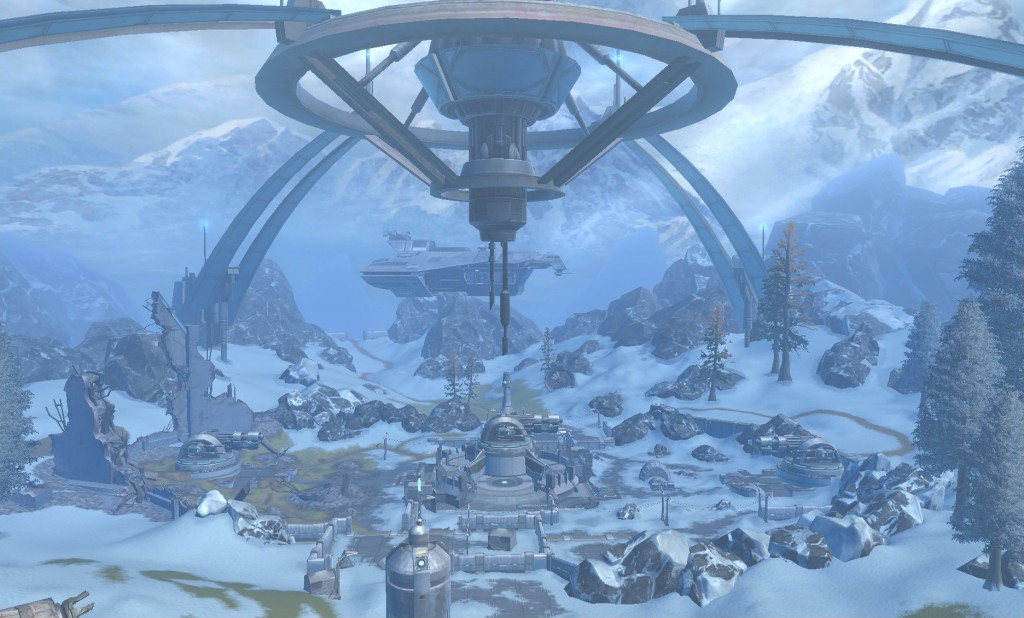
All servers support Warfront PvP (Huttball, The Voidstar, and The Civil War) and region control PvP on the planet of Ilum (and Tatooine), but the PvP specific servers pitch Republic vs. Imperial empires. Jedi vs. Sith. Bounty Hunters vs. Troopers. It’s open season! However be warned! There are apparently more Dark Side players than Light Side players with 550,000 Sith Warriors vs. 510,000 Jedi Knights, as reported by USA Today. It is important to state that characters do gain progression experience by engaging in both warfronts and space combat missions. Since the game is so new, it’s impossible to tell how balanced PvP is just yet. We’ll have to keep an eye on things over the next few months to see how players react, however as the core classes on each side are so similar, it makes for easier balancing. Let’s hope that was part of their PvP design. The PvP Token (Commendation) system was explained above under Mechanics – Economy.
The Rewards in SWTOR are fairly standard, with most of taking from of quest rewards (which usually have multiple choices) and looting mobs. When you down a mob, the type of loot that is on its body (if any at all) can be seen by the color of the “loot glow” which is a nice feature, especially when that purple glow shows up. There’s definitely better loot from the tougher mobs, but it seems fairly well balanced as the really good stuff is hard to come by. One thing I do like is that a chest generally contains valuable treasure, so when you come across one, it’s definitely worth going out of your way to obtain its contents. So far, it’s been my experience the best rewards come from crafting; there’s nothing like a superior purple item loading up with mods – but when those purple items drop and they match your character’s needs, it’s something to get excited about as well.
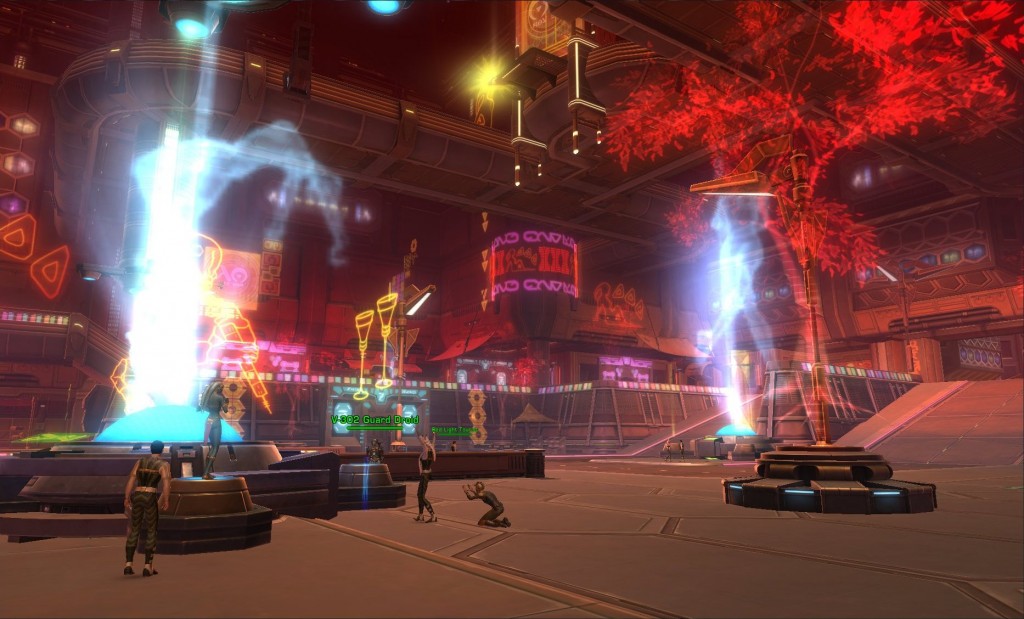
Character Progression for any MMOG is an art, and in SWTOR it seems well-balanced. I’ve always had quests left over when I was ready to leave a planet and never felt “stuck” at a specific level or like I had to go and grind to get the next rank of a skill to take out a mob. This is a very good thing.
The Learning Curve is pretty minimal as an inexperienced player can jump right in and learn the basics through the tutorial. The only thing people seem to get a bit confused on is reverse engineering and acquiring custom missions. Space Combat is intuitive and easy for anyone to jump right into. The Galaxy map is easy to use and it’s easy to get where you need to go, and the planet map easily shows you where to go, what areas are unexplored, and where vendors are.
Replayability is still a bit of an unknown factor as it will take some time to find out how repetitive the core content separate from the class-based storylines is. But the fact that each base class has a different storyline guarantees some variation of play regardless of going through the same planets and content.
End Game currently consists of a number of options: Planet Ilum Dailies (where you obtain Daily Commendation tokens to buy high level gear), Space Combat Dailies, Crafting (includes Missions/Grinding for Materials or Credits), Flashpoints or PvP. Unfortunately there is currently no alternate advancement system for progression and the features of the Legacy system are undefined, so all end-game progress is in obtaining gear – but as you have 5 companions and a space ship to outfit, there’s quite a bit to do if you’re into that sort of thing. Granted you gain experience toward your Legacy for each kill, since the system is undefined we don’t know what those levels are going to produce. I certainly hope Bioware implements a Level 50 progression system soon (e.g. how RIFT did with Planar Attunement) as those who aren’t interested in PvP or hardcore raiding will find themselves with nothing to strive for save building other characters.
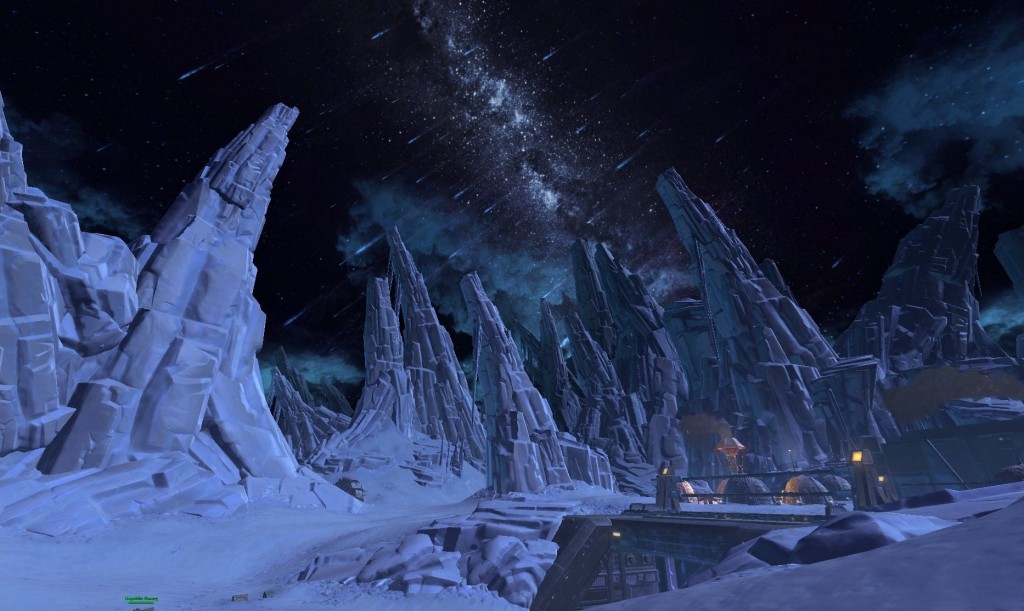
Technical
Connectivity, Patching, Interface, Graphics, Sound, Account, and Bugs
Online Connectivity is solid. I’m playing on a West Coast server from Seattle and my latency averages 55. While I’ve encountered one or two disconnects since launch, I haven’t really encountered any lag or issues as it relates to online communication and play. Patching is quick and seamless. Bioware has launched SWTOR with a very solid network interface layer and server infrastructure.

The Interface is smooth and has a solid feel to it. You can turn on additional action bars and also adjust the “floating combat” messages. Unfortunately there is no Addon or Macro support just yet, but I’m sure that’s all coming. The good news is I haven’t felt the need for macros in order to play the game or accomplish certain tasks.
The Graphics are well-done (I have all settings on the highest value), but because of the sheer scale of the world, they aren’t the highest resolution one would expect; instead Bioware decided to focus on the visuals of combat and animation; and when it comes to light sabers, blasters, and space combat, the game looks great.
The Sound FX and Music are well done too; the light sabers sound exactly as you would expect and the music makes you feel like you are in the Star Wars universe. The environmental effects vary based on the planet you are on, and the squeals, yells and other entertaining sounds made by NPCs as you pummel them is rather entertaining. You can also wander into a cantina, purchase a token, and play your music of preference on the jukebox.
Account Management is simple as there is no market or features above subscription.
There are a number of Bugs at launch, mainly with the graphics (there’s a stutter bug that requires the Client to be restarted every few hours on my 480GTX) and a few minor problems with sound, mostly regarding ambient FX. There’s a few UI glitches including the guild member list not showing online members properly. I’ve also noticed some strange behavior during combat where actions seem to freeze up without any reason; I was talking with another player who had the same issue but it was very rare. One annoying issue is while running in windowed mode, the Client doesn’t remember its position and size, and strangely enough it always comes up at wider than 1920. But we have to give Bioware some latitude here; SWTOG is a massive production and the game was just released. I don’t feel the need to come down on them too harshly as I believe they will fix these issues as soon as they can. However there is one issue which should not have made it past BETA. If you’re in a world heroic with others and die while engaging in a boss fight and are running back to your body (and are outside of the instance) when the group loots the boss, you miss out on the loot roll. Let’s hope Bioware fixes this as soon as possible.
Support
Help, CSGM (“Customer Service Game Master”), Online Support, Community Support, and Forums
There is a Petition system built into the game and it works very well, and given the sheer number of players hitting the game at launch, I think Bioware is doing a good job of keeping up with the Petitions, especially as the ones I’ve filed have all been answered within a few hours. I’ve only had to deal with CSGMs via the petition system, and so far I like what I see. The Forums are crazy and so many posts are going up it’s almost impossible to keep track. This is the same issue that WoW has; Bioware should figure out how to segment forum posts (perhaps by account region) as a forum which has numerous posts every second is simply overwhelming and doesn’t really help the players. Online Support from other players is pretty weak as the game natually focuses players on their own experience and storyline, and if a player is in the middle of a cutscene or engaged in space battle, they don’t see any messages. For Community Support, the SWTOR Wiki is still in its infancy and the main item database is currently DarthHater DB.
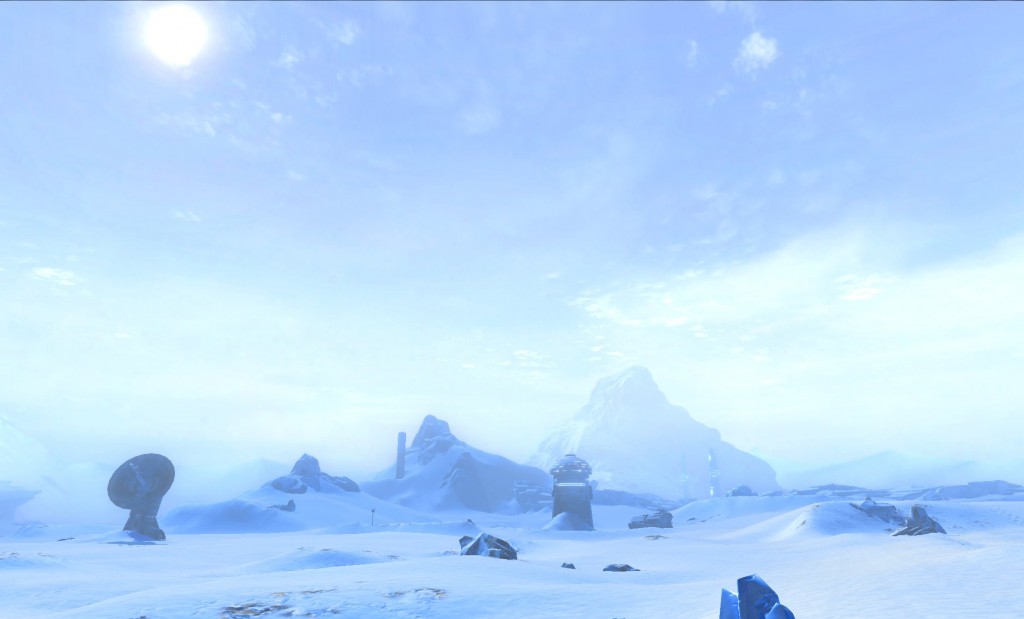
Conclusion
Star Wars: The Old Republic is definitely the biggest MMOG of 2011 and reflects a massive budget and dedicated team of people at Bioware who wanted to release a quality, leading edge online game to compete in the MMOG market for years to come, and they have done just that. While some necessary features are missing, such as post level 50 character alternate advancement (i.e. the defined Legacy system), Guild Banks and Guild Perks, I have no doubt Bioware will be addressing these features soon. I am also glad to see another MMOG release that is subscription-base, showing F2P is not the future for all products. As I mentioned earlier, even though I’m not a Star Wars “fan” I did grow up with the movies and appreciate the world. The storyline, voice acting and interactive quest system is hands down the best of any MMOG, and the way they have presented the world is exceptional. SWTOR offers a universe where gamers will want to play for a long time to come.
The game design supports a massive potential for expansion; new planets, space missions, flashpoints, and more. Let’s hope Bioware has some rock-solid content tools which allow them to grow and evolve the game with additional content in a reasonable amount of time.
If you like quality online games and want to get pulled into a vibrant, fun and engrossing living breathing world, Star Wars: The Old Republic delivers.
